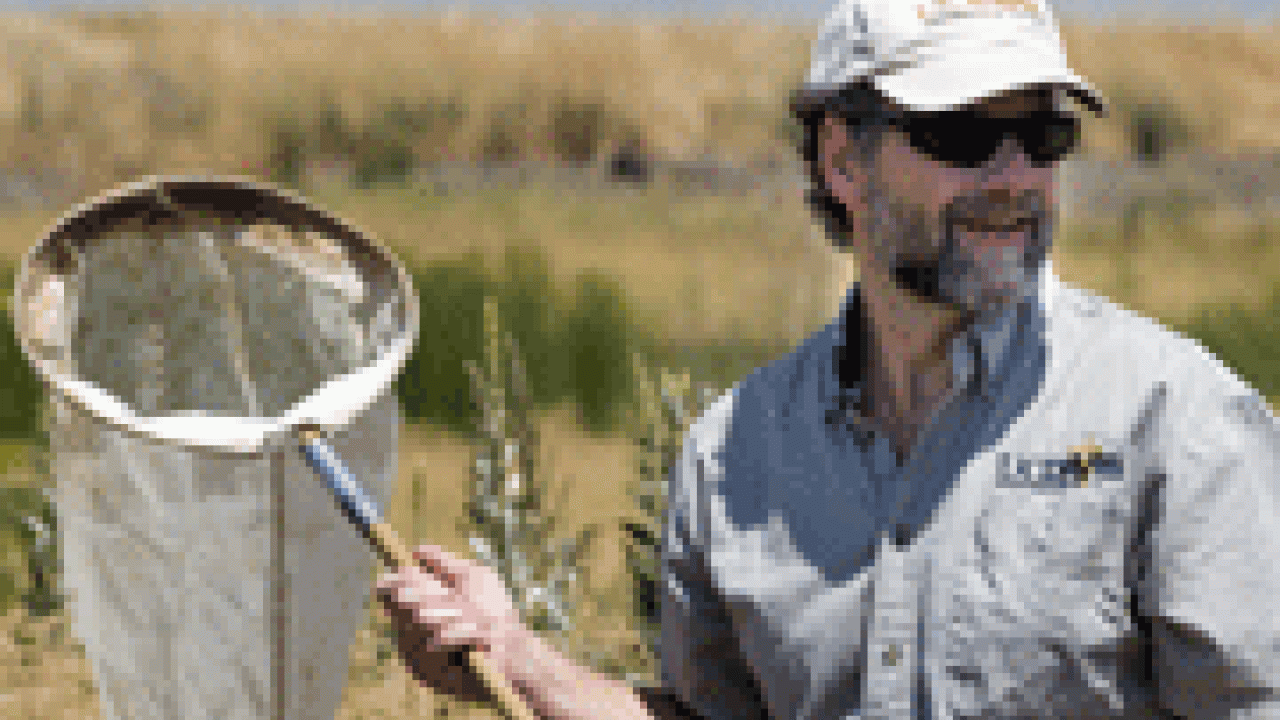As pest control officials wrestled with the wind in their fight against mosquitoes and West Nile virus, UC Davis researchers wrangled hundreds of other bugs for a related experiment.
"We really wonder if the pyrethrins (active ingredient in the mosquito-killing insecticide) have any effect on these fairly ubiquitous insects," said UC Davis veterinarian Walter Boyce, referring to his 160 test subjects: dragonflies, garden spiders and alfalfa butterflies.
In fact, after Tuesday night's aerial spraying, Boyce reported these results from the Davis spray zone: All of the dragonflies and spiders and all but two out of 30 butterflies survived.
"It's somewhat reassuring that these fairly large-bodied organisms survived," said Boyce, director of the university's Wildlife Health Center. He noted that the two butterfly fatalities probably were victims of a sprinkler, not the spray.
Other UC Davis researchers, including entomology professor Bill Reisen, are studying pyrethrins' effect on the intended targets: adult mosquitoes, those already infected with West Nile virus and those that could be infected. Results were not available by press time.
The Sacramento-Yolo Mosquito and Vector Control District's spray operation covered Woodland as well as Davis, and a repeat application was planned for 8 p.m. to midnight Wednesday; Dateline went to press hours earlier.
On July 31, the district announced that West Nile infection in mosquitoes had reached "epidemic levels." Mosquitoes get the virus from infected birds, and pass it on to other birds as well as people. As of Wednesday morning, seven people had been infected in Yolo County.
Thirty-three human cases had been reported statewide as of 4 p.m. Tuesday, with no deaths. Last year in California, 19 people died of West Nile virus.
Fatalities are rare. About 80 percent of infected people will not have any symptoms, state health authorities say. Others will show mild symptoms such as fever, headache, body aches, nausea, vomiting and sometimes swollen lymph glands, or a rash on the chest, stomach and back
Severe cases
In severe cases, affecting less than 1 percent of people who are infected — about one in 150 — symptoms can include high fever, headache, neck stiffness, stupor, disorientation, coma, tremors, convulsions, muscle weakness, vision loss, numbness and paralysis. These symptoms may last several weeks, and neurological effects may be permanent.
The risk of the disease is "hugely larger" than any risk of the insecticide, said Yolo County Public Health Officer Bette Hinton, answering public criticism of the spraying. "It's a pretty rare person who would have any kind of reaction to this product."
The pyrethrins, derived from chrysanthemums, are contained in EverGreen Crop Protection EC 60-6.
David Brown, manager of the mosquito control district, said the insecticide applied to each acre amounts to 0.66 ounce, less than a packet of Sweet'n Low. The application process involves atomizing the insecticide into billions of droplets.
To assess the insecticide's impact on mosquitoes in Davis, Reisen and doctoral student Carrie Nielsen set out two mosquito-filled "cages" at 21 sites.
"These mosquitoes are giving their lives to science," Reisen said. "Our objective is to have them all murdered by the end of the evening."
Boyce conducted a study on pyrethrins' effect on nontargeted species last year when the pest control district sprayed in Sacramento County. But, with little time to get prepared, he settled for easily available bugs: crickets, mealy worms, earwigs and indoor spiders.
"They weren't really the best choices," he said.
Field collections
This year, with more lead time, he and his colleagues went into the field to collect dragonflies and garden spiders not once but twice — once before the aborted spraying on Aug. 3, and then for Tuesday's spraying. In between collections, the researchers decided to add the alfalfa butterflies to the study.
At stores up and down the valley, researchers bought dozens of lingerie and sweater bags to hold the dragonflies and butterflies. The researchers put the spiders in "cages," just like those holding the test mosquitoes.
Boyce and his team set out the dragonflies, butterflies and spiders near 10 of the 21 mosquito-trapping sites in Davis. The team also set out dragonflies and spiders between Davis and Winters, outside the spray zone, to serve as a control group.
Working with Boyce were Professor Lynn Kimsey and Associate Professor Sharon Lawler, both of the Department of Entomology.
Last year's test on crickets, mealy worms, earwigs and indoor spiders showed that they were unaffected by the pyrethrins, Boyce said.
In switching to dragonflies, butterflies and spiders, "we are trying to mimic natural conditions as much as possible," said Boyce, noting that garden spiders are active around dusk when the spraying usually takes place, and dragonflies roost in trees around the same time.
More information
The mosquito control district's news releases regarding the Davis-Woodland aerial spraying are available online, http://www.fightthebite.net/mediacorner/releases.php.
UC Davis' Aug. 1 directive on the spraying operation is available at http://directives.ucdavis.edu/2006/06-081.cfm.
Media Resources
Dave Jones, Dateline, 530-752-6556, dljones@ucdavis.edu
